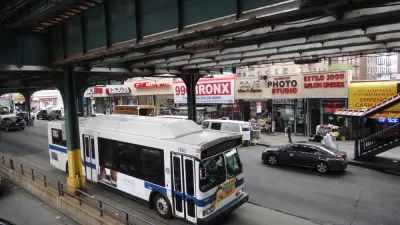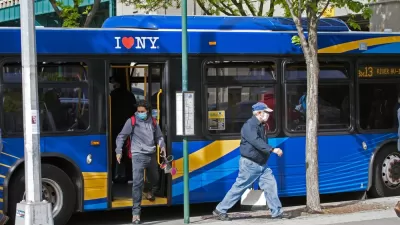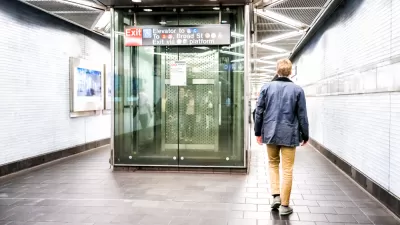The Regional Plan Association released a report this week finding New York's transit system to be irrationally skewed toward Manhattan service. The report proposes a list of capital projects to correct the imbalance.
"The outer boroughs have more residents commuting within them than to Manhattan. But you wouldn't know it from looking at a map of New York City's transit network," according to a post by the Regional Plan Association.
That information is one of the findings of a report released this week by RPA titled "Overlooked Boroughs." Here's more on the counterintuitive balance of commuters in the outer boroughs as compared to Manhattan:
"New York's transit network was designed in the early part of the last century to bring residents to the urban core and out again. Yet more people commute within the outer boroughs than from Queens, Brooklyn, Staten Island or the Bronx to Manhattan. Roughly 1.7 million residents of the four outer boroughs commuted to jobs within those boroughs in 2010, an increase of 18% from a decade earlier. Fewer New Yorkers - about one million -- commuted to jobs from the outer boroughs to Manhattan, up 12% from 2010."
The report includes a number of transportation planning recommendations to address the future (and present) needs of the New York metropolitan transportation system. A few examples:
- "Increase the frequency of bus service on dozens of outer-borough route"
- "Run a 24-mile overground rail line running on an existing rail right-of-way from Bay Ridge in Brooklyn, through Queens, to Co-Op City in the Bronx, to carry passengers directly from one outer borough to another"
- "Extend the Second Avenue subway both north to the Bronx and south to Lower Manhattan"
There is a lot more in both the executive summary [pdf] and the full technical report [pdf].
FULL STORY: Manhattan-Centric Transit System Falls Short in Other Boroughs

Alabama: Trump Terminates Settlements for Black Communities Harmed By Raw Sewage
Trump deemed the landmark civil rights agreement “illegal DEI and environmental justice policy.”

Study: Maui’s Plan to Convert Vacation Rentals to Long-Term Housing Could Cause Nearly $1 Billion Economic Loss
The plan would reduce visitor accommodation by 25% resulting in 1,900 jobs lost.

Planetizen Federal Action Tracker
A weekly monitor of how Trump’s orders and actions are impacting planners and planning in America.

Wind Energy on the Rise Despite Federal Policy Reversal
The Trump administration is revoking federal support for renewable energy, but demand for new projects continues unabated.

Passengers Flock to Caltrain After Electrification
The new electric trains are running faster and more reliably, leading to strong ridership growth on the Bay Area rail system.

Texas Churches Rally Behind ‘Yes in God’s Back Yard’ Legislation
Religious leaders want the state to reduce zoning regulations to streamline leasing church-owned land to housing developers.
Urban Design for Planners 1: Software Tools
This six-course series explores essential urban design concepts using open source software and equips planners with the tools they need to participate fully in the urban design process.
Planning for Universal Design
Learn the tools for implementing Universal Design in planning regulations.
Caltrans
Smith Gee Studio
Institute for Housing and Urban Development Studies (IHS)
City of Grandview
Harvard GSD Executive Education
Toledo-Lucas County Plan Commissions
Salt Lake City
NYU Wagner Graduate School of Public Service





























